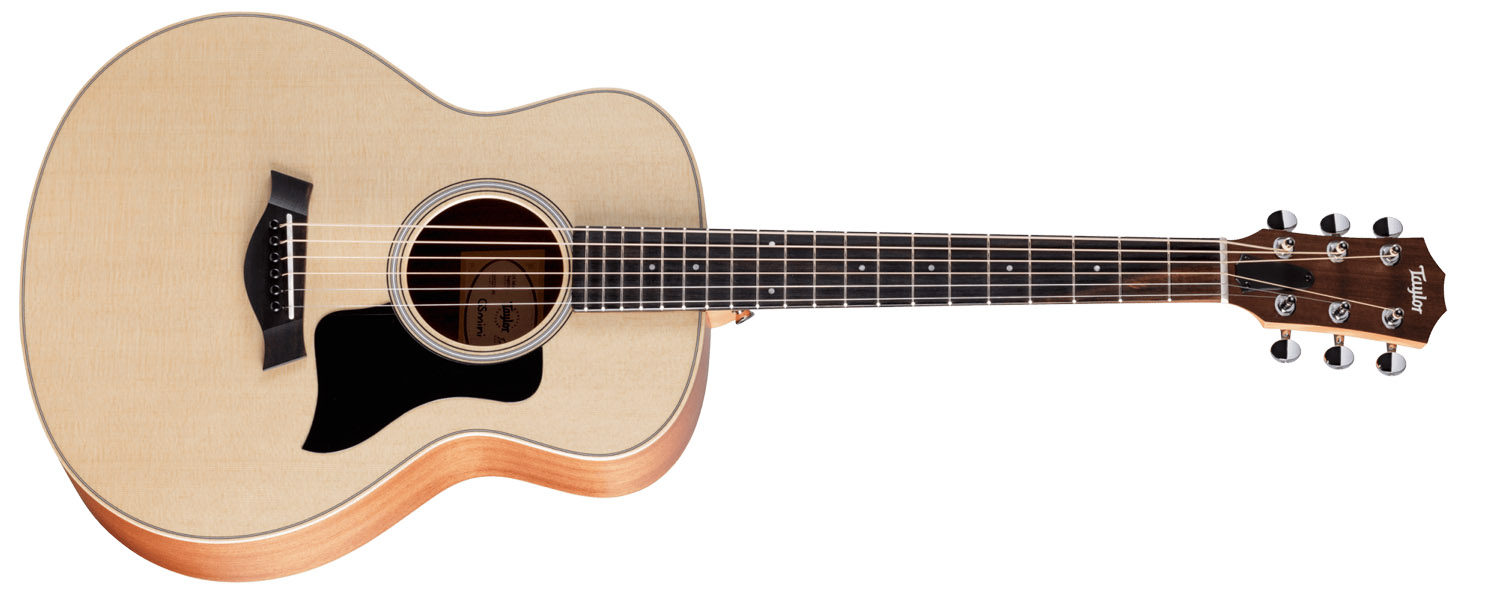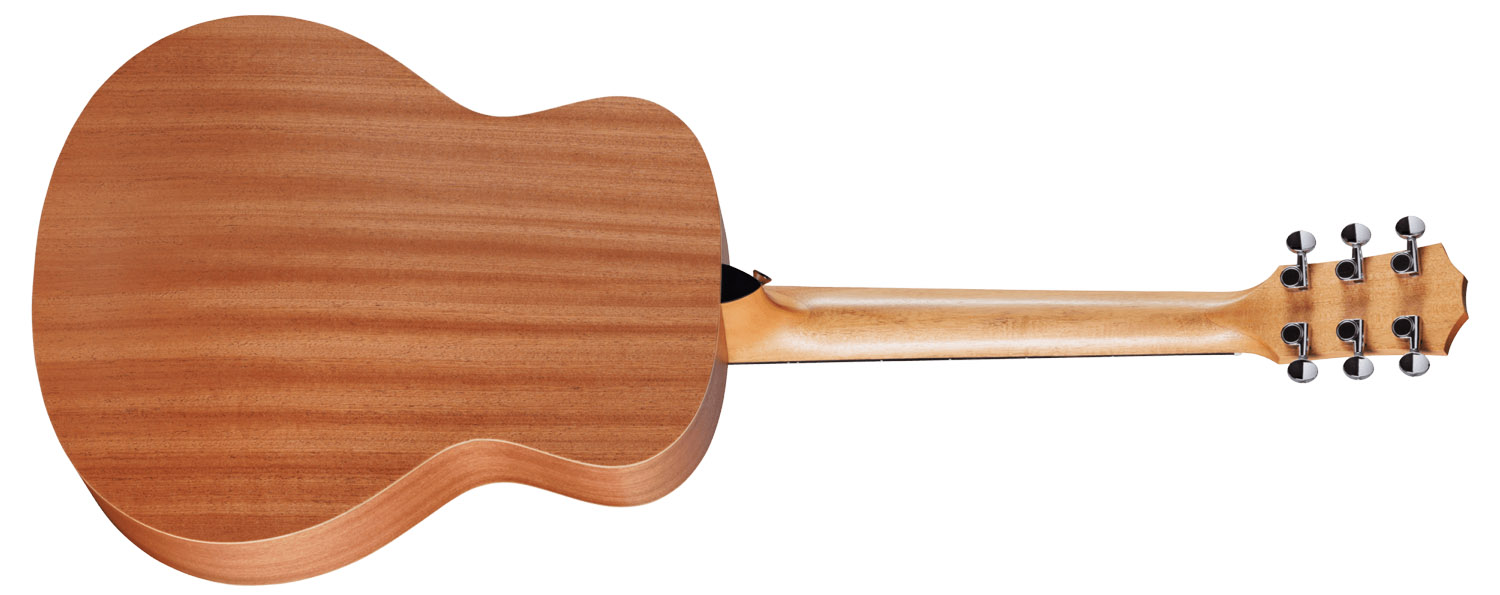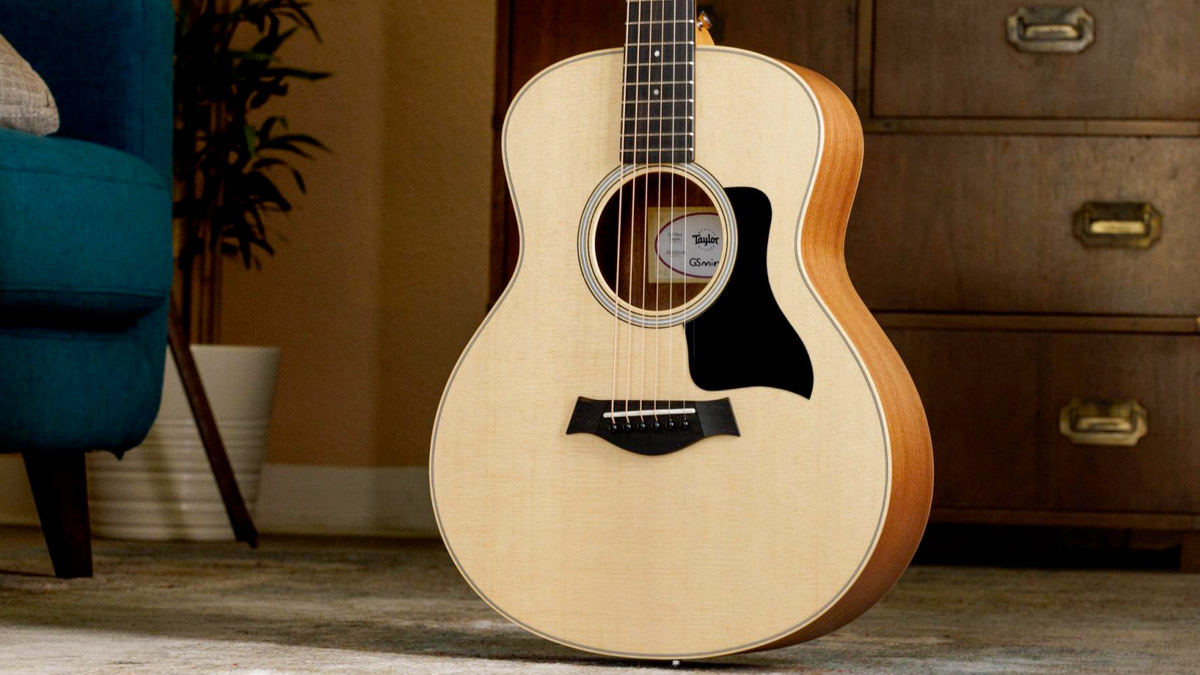Guitar World Verdict
The GS Mini Sapele remains the perfect choice for budget-conscious players who want the comfort and portability of a small-body acoustic without sacrificing big guitar tone.
Pros
- +
Price almost $200 less than 14 years ago.
- +
Big guitar tone.
- +
Shorter scale is ideal for beginners, or even children.
- +
Top-quality build.
Cons
- -
The bass response of the low E string is somewhat subdued.
You can trust Guitar World
We first reviewed the Taylor GS Mini shortly after Taylor announced the model in 2010. Over the last 14 years, Taylor has introduced a wide variety of GS Mini models and expanded the line, which now consists of 10 models that range in price from $499 to $1,199, and includes two acoustic bass guitars.
The Taylor GS Mini Sapele occupies the lowest end of that price spectrum (with the GS Mini-e Koa Plus and GS Mini-e Rosewood Plus costing the most), and much to our surprise it's very similar to the original GS Mini model we reviewed but costs nearly $200 less! How Taylor defied the laws of inflation is a mystery, considering that the materials, craftsmanship, tone, and playability remain as good as they’ve ever been.
The GS Mini Sapele still retains the curvaceous Grand Symphony body shape, deep body dimensions (almost 4 ½ inches at the deepest extension of its arched, bowl-shaped back), and specially voiced cross bracing construction found throughout the GS Mini line that help the model deliver big acoustic guitar tone from a compact, travel-size instrument.
Other specs consistent throughout the entire GS Mini lineup include a 23 ½-inch scale, 20 frets and 1 11/16-inch nut width.

The GS Mini Sapele’s top is solid Sitka spruce while the back and sides are layered sapele – an alternative to mahogany that is stronger and harder, resulting in slightly brighter overall tone than mahogany.
The ebony fretboard and bridge also remain from the previous iteration, but the neck is now tropical mahogany (instead of sapele) and the saddle is Micarta instead of Nubone. The model ships with a structured gig bag that provides better protection than a standard soft gig bag.
Taylor doesn’t specify the ratio for the model’s die-cast chrome tuners, but it feels like a higher ratio that provides finer detailed accuracy for precise tuning. The tuners and bridge pins anchor the strings securely in place, keeping the guitar perfectly in tune even after long sessions of vigorous strumming.
All the latest guitar news, interviews, lessons, reviews, deals and more, direct to your inbox!

Tonally, the GS Mini Sapele sounds as good as ever, with impressive volume output and projection, rich, reverb-like resonance, brisk treble, and sweet, sonorous midrange. The bass is just slightly reined in, particularly on the low E string, but while the bass may not seem as boisterous when playing live, this could actually be a major bonus in the studio as recorded tones are nicely balanced and need less EQ sculpting.
As players have come to expect from Taylor, the construction is flawless throughout and the materials are especially attractive for a sub-$500 instrument, with the subtle stripes of the sapele back being particularly noteworthy. The light satin finish leaves open pores in the sapele back and sides that allow the wood to breathe.
A pre-installed bracket and cable clip for mounting an optional ES-Go pickup allows owners to electrify the guitar when the need arises or their budgets allow.
Specs
- PRICE: $499 / £499
- TYPE: Scaled-down Grand Symphony / modern parlor acoustic
- TOP: Sitka Spruce
- BACK AND SIDES: Layered sapele
- NECK: Neo-tropical mahogany
- SCALE: 23.5”
- NUT WIDTH: 42.9mm
- FINGERBOARD: West African Crelicam Ebony
- CASE: Gig-bag included
- CONTACT: Taylor Guitars
Chris is the co-author of Eruption - Conversations with Eddie Van Halen. He is a 40-year music industry veteran who started at Boardwalk Entertainment (Joan Jett, Night Ranger) and Roland US before becoming a guitar journalist in 1991. He has interviewed more than 600 artists, written more than 1,400 product reviews and contributed to Jeff Beck’s Beck 01: Hot Rods and Rock & Roll and Eric Clapton’s Six String Stories.


